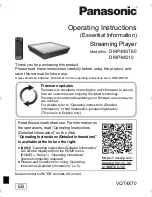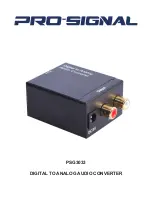
DS1113F1
25
CS4399
4.3 Class H Output
4.3.1
Power Supply Control Options
This section describes the two types of operation: standard Class AB and adapt-to-output signal. The set of rail voltages
supplied to the amplifier output stages depends on the
) setting.
4.3.1.1 Standard Class AB Operation (ADPT_PWR = 001 or 010)
If ADPT_PWR is set to 001 or 010, the rail voltages supplied to the amplifiers are held to ±VP_LDO or ±VCP, respectively.
The rail voltages supplied to the output stages are held constant, regardless of the output signal level. The CS4399 outputs
simply operate in a traditional Class AB configuration.
4.3.1.2 Adapt-to-Output Signal (ADPT_PWR = 111)
If ADPT_PWR is set to 111, the rail voltage sent to the output stages is based solely on whether the signal sent to the
amplifiers would cause the amplifiers to clip when operating on the lower set of rail voltages at certain threshold values.
• If it would cause clipping, the control logic instructs the charge pump to provide the next higher set of rail voltages
to the amplifiers.
• If it would not cause clipping, the control logic instructs the charge pump to provide the lower set of rail voltages to
the amplifiers, eliminating the need to advise the CS4399 of volume settings external to the device.
4.3.2
Power-Supply Transitions
Charge-pump transitions from the lower to the higher set of rail voltages occur on the next FLYN/FLYP clock cycle. Despite
the system’s fast response time, the VCP_FILT pin’s capacitive elements prevent rail voltages from changing instantly.
Instead, the rail voltages ramp up from the lower to the higher supply, based on the time constant created by the output
impedance of the charge pump and the capacitor on the VCP_FILT pin (the transition time is approximately 20 µs).
shows Class H supply switching. During this charging transition, a high dv/dt transient on the inputs may briefly
clip the outputs before the rail voltages charge to the full higher supply level. This transitory clipping has been found to be
inaudible in listening tests.
Figure 4-4. VCP_FILT Transitions
When the charge pump transitions from the lower to higher set of rail voltage, there is no delay associated with the
transition.
When the charge pump transitions from the higher to the lower set of rail voltages, there is an approximate 5.5-s delay
before the charge pump supplies the lower rail voltages to the amplifiers. This hysteresis ensures that the charge pump
does not toggle between the two rail voltages as signals approach the clip threshold. It also prevents clipping in the
2.Relative to digital full scale with output gain set to 0 dB.
3.In fixed modes, clipping can occur if the signal level exceeds the maximum of this range due to setting the
supply too low.
+VCP
Ideal Transition
Actual Transition caused
by V Capacitor
Time
+VP_LDO
-VCP
-VP_LDO
















































